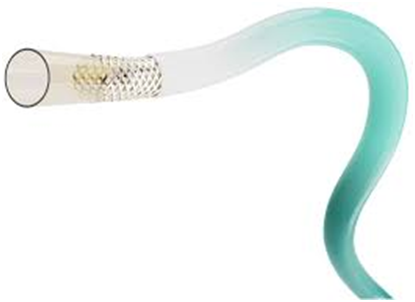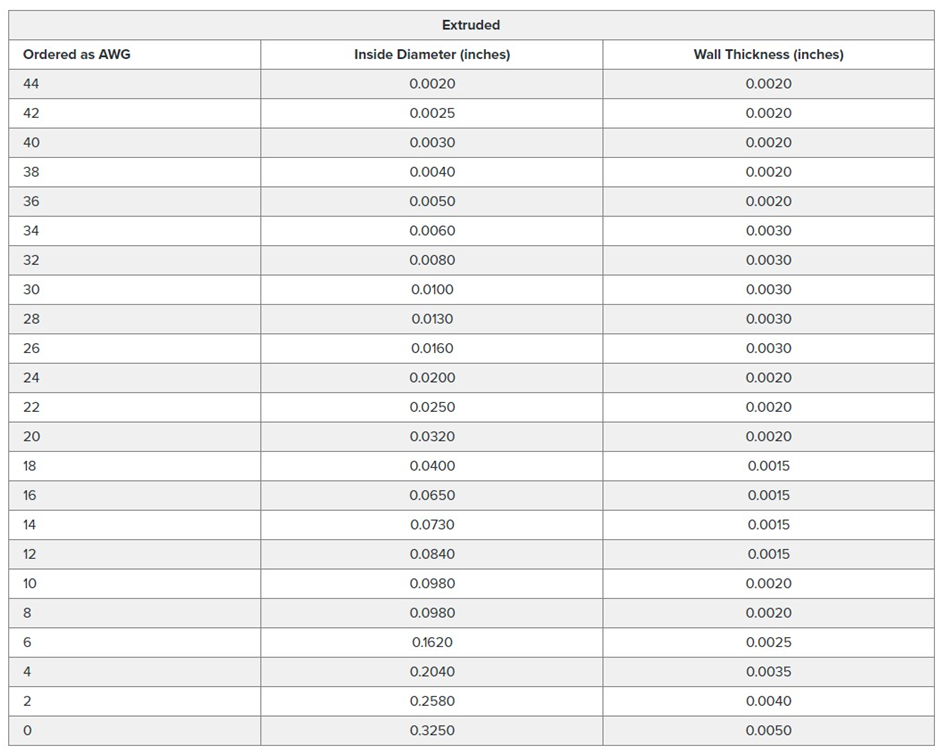PTFE Extrusions

DTC & Manufacturing partner are celebrating the launch of their PTFE production line in Singapore opened in Q3 2022 and are joining a very elite group of companies worldwide. With the latest advancements in extrusion technology, we are able to produce the most versatile, thinnest, and highest quality PTFE Catheter liners.
Since discovery in the late 1930’s it has been the polymer of choice for many applications. This was mainly due to the unique properties of PTFE. With the lowest coefficient of friction of any polymer offered and an extremely broad working temperature range, PTFE is ideal for use in products such as catheters for delivery channels for medical devices and wire and cable insulation for aircraft. Because of its unparalleled chemical resistance, PTFE has become an ideal polymer for the chemical and analytical sciences as well. We extrude PTFE in various forms.
Key Properties: Lowest coefficient of friction of any polymer, Chemical resistance (all common solvents, acids and bases) and inertness, ETO and autoclave sterilizability, Working temperature range -454°F (-270°C) to 500°F (260°C), Excellent dielectric insulating properties, Biocompatibility – certified USP Class VI n Flame rating – UL 94 VO, Limiting oxygen index- greater than 95
PTFE PROCESSING FORMS
- Extrusions
- Electrospinning
- Expanded PTFE extrusions
- Radio-opaque (bismuth and barium)
- Others available upon request
APPLICATIONS
- Catheter componentry
- Wire and cable insulation
- Furcation tubing for fiber optics
- Analytical and fluid management tubing
- Stent grafts
AVAILABLE PRODUCTS
- PTFE Tubing and heat shrink
- Convoluted tubing
- Ultra-Thin-Wall PTFE tubing and heat shrink
- Monofilament
- Multi-lumens and custom profiles
- Custom insulated wire
- Membranes and other porous products
- Heat shrink AS23053/12
DTC ultra-thin-walled PTFE extrusions with wall thicknesses from 0.005″ (0.127 mm) and below. And Tolerances as low as ± 0.0005″ (0.0127 mm).
APPLICATIONS KEY PROPERTIES
Catheters: PTFE Ultra-Thin Wall products support the critical functions and construction of a range of catheter types from steerable and deflectable catheters down to the smallest microcatheter.
Endoscopy: Ultra Thin Wall inner PTFE liners for catheters provide the utmost in lubricity, electrical performance, chemical resistance, and are UV sterilizable. Because of their extremely low coefficient of friction, these PTFE liners are ideal as inner walls through which instruments can be passed.
Introducer Sheaths: These devices provide the means for getting your intervention where it is needed. Our sheath construction components provide lubricity and flexibility while maintaining small diameter size preferred for these devices.
The development of PTFE was a significant breakthrough in polymer sciences. The special processing requirements of PTFE led researchers to develop a melt-processable version of PTFE resulting in FEP. This new resin was compatible with existing processing methods and equipment. Melt processability also allowed for long continuous extrusions of FEP in applications such as wire and cable.
The term FEP stands for fluorinated ethylene-propylene copolymer while the term PTFE stands for polytetrafluoroethylene. The key difference between FEP and PTFE is that FEP is melt-processable using conventional injection moulding and screw extrusion techniques, whereas PTFE is not melt-processable.
PTFE vs FEP Tubing Due to their high chemical resistance, high and low temperature capabilities, and resistance to a wide range of chemicals and elemental conditions, stock PTFE and FEP lined tubing products can both be utilized in a variety of applications. FEP Tubing is differentiated from PTFE Tubing due to FEP’s lower heat shrink temperature and increased clarity and flexibility.
Key Properties: Excellent coefficient of friction, Chemically resistant and inertness, Gamma, ETO and autoclave sterilizable, Maximum working temperature 400°F (204°C), Excellent transmission of UV rays, Lower gas and vapor permeability than PTFE, Low absorption of solvents (less than 1%)
PTFE Tubing Sizes:

